Geometric Patterns Study Guide
Geometric patterns are recurring visual designs or motifs that are created using geometric shapes such as lines, angles, and curves. These patterns can be found in art, architecture, nature, and even in mathematical concepts. Understanding geometric patterns involves recognizing and analyzing the repeating elements and structures within the pattern.
Types of Geometric Patterns
There are several types of geometric patterns, including:
Properties of Geometric Patterns
When studying geometric patterns, it's important to consider the following properties:
- Repetition: Identifying the repeated elements within the pattern.
- Symmetry: Understanding if the pattern exhibits reflection, rotational, or translational symmetry.
- Scaling: Analyzing how the pattern changes in size or dimension.
- Connection to Mathematics: Exploring the mathematical concepts and principles behind the pattern.
Study Tips
Here are some tips for studying geometric patterns:
- Observe and Analyze: Take time to observe various geometric patterns in different contexts and analyze their characteristics.
- Practice Drawing: Try to recreate geometric patterns by drawing or using geometric tools such as compasses and rulers.
- Research: Explore the historical and cultural significance of geometric patterns in different societies and art forms.
- Mathematical Concepts: Connect geometric patterns to mathematical concepts such as symmetry, angles, and transformations.
- Real-life Applications: Look for real-life examples of geometric patterns in architecture, design, and nature.
Example Problem
Identify the type of symmetry exhibited by the following geometric pattern:
 Symmetry Pattern Example">
Symmetry Pattern Example">Answer: The pattern exhibits reflection symmetry.
.◂Math Worksheets and Study Guides Sixth Grade. Mixed Numbers
Study Guide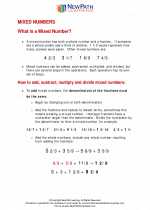 Mixed Numbers
Mixed Numbers  Worksheet/Answer key
Worksheet/Answer key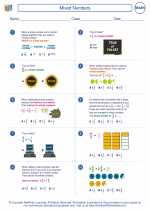 Mixed Numbers
Mixed Numbers  Worksheet/Answer key
Worksheet/Answer key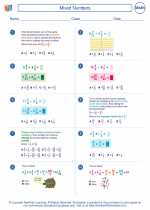 Mixed Numbers
Mixed Numbers  Worksheet/Answer key
Worksheet/Answer key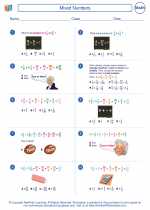 Mixed Numbers
Mixed Numbers  Worksheet/Answer key
Worksheet/Answer key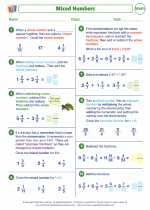 Mixed Numbers
Mixed Numbers 

 Worksheet/Answer key
Worksheet/Answer key
 Worksheet/Answer key
Worksheet/Answer key
 Worksheet/Answer key
Worksheet/Answer key
 Worksheet/Answer key
Worksheet/Answer key

The resources above cover the following skills:
Number and Operations (NCTM)
Compute fluently and make reasonable estimates.
Develop and analyze algorithms for computing with fractions, decimals, and integers and develop fluency in their use.